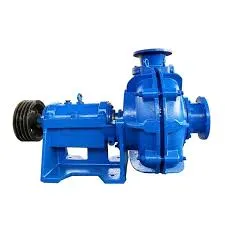Luxembourgish
- Afrikaans
- Albanian
- Amharic
- Arabic
- Armenian
- Azerbaijani
- Basque
- Belarusian
- Bengali
- Bosnian
- Bulgarian
- Catalan
- Cebuano
- Corsican
- Croatian
- Czech
- Danish
- Dutch
- English
- Esperanto
- Estonian
- Finnish
- French
- Frisian
- Galician
- Georgian
- German
- Greek
- Gujarati
- Haitian Creole
- hausa
- hawaiian
- Hebrew
- Hindi
- Miao
- Hungarian
- Icelandic
- igbo
- Indonesian
- irish
- Italian
- Japanese
- Javanese
- Kannada
- kazakh
- Khmer
- Rwandese
- Korean
- Kurdish
- Kyrgyz
- Lao
- Latin
- Latvian
- Lithuanian
- Luxembourgish
- Macedonian
- Malgashi
- Malay
- Malayalam
- Maltese
- Maori
- Marathi
- Mongolian
- Myanmar
- Nepali
- Norwegian
- Norwegian
- Occitan
- Pashto
- Persian
- Polish
- Portuguese
- Punjabi
- Romanian
- Russian
- Samoan
- Scottish Gaelic
- Serbian
- Sesotho
- Shona
- Sindhi
- Sinhala
- Slovak
- Slovenian
- Somali
- Spanish
- Sundanese
- Swahili
- Swedish
- Tagalog
- Tajik
- Tamil
- Tatar
- Telugu
- Thai
- Turkish
- Turkmen
- Ukrainian
- Urdu
- Uighur
- Uzbek
- Vietnamese
- Welsh
- Bantu
- Yiddish
- Yoruba
- Zulu
Telephone: +86 13120555503
Email: frank@cypump.com
Sep . 29, 2024 05:13 Back to list
Residential Sewage Pump Solutions for Efficient Wastewater Management and Lift Systems
Understanding Residential Sewage Lift Pumps
In any household, the efficient management of wastewater is crucial for maintaining hygiene and health standards. One essential component in this system is the residential sewage lift pump. These pumps play a significant role in transporting sewage and wastewater from lower elevations to the sewage system or septic tank, particularly in situations where gravity drainage is not feasible.
What is a Residential Sewage Lift Pump?
A residential sewage lift pump, often referred to as a sump pump or a sewage ejector pump, is designed to move sewage from areas of a home where gravity cannot efficiently facilitate drainage. This typically applies to basements or properties that are situated below the level of the main sewer line. In such scenarios, a sewage lift pump is installed to elevate the sewage and wastewater to a higher level, allowing it to flow into the sewage system.
How Does It Work?
The functioning of a lift pump is relatively straightforward. When wastewater accumulates in a sump basin, typically installed below the ground level, the pump is activated by a float switch that detects the water level. Once the water reaches a predetermined height, the float switch signals the pump to start. The pump then forces the sewage through a discharge pipe and out to the sewer system, ensuring continuous wastewater management.
Types of Sewage Lift Pumps
There are mainly two types of residential sewage lift pumps grinder pumps and ejector pumps.
residential sewage lift pump

1. Grinder Pumps These are equipped with a grinding mechanism that shreds solid waste into smaller particles, making it easier to pump through narrow pipes. Grinder pumps are particularly useful in systems where the sewage may contain larger solids, such as in some residential settings or in areas with strict sewage disposal regulations.
2. Ejector Pumps Unlike grinder pumps, ejector pumps are designed to handle wastewater with relatively smaller solids. They work effectively in situations where the wastewater is primarily liquid with some particulate matter. Ejector pumps are commonly used in homes with basements, where lifting wastewater to the main drainage level is necessary.
Benefits of Residential Sewage Lift Pumps
The installation of a sewage lift pump offers several advantages
- Preventing Backflow Lift pumps help prevent sewage backflow, ensuring that wastewater does not enter living areas. - Environmental Safety By effectively managing sewage, these pumps contribute to a cleaner environment, reducing the risk of contamination. - Increased Property Value Homes equipped with efficient wastewater management systems, including lift pumps, may have higher property values and appeal to buyers concerned about plumbing infrastructure.
Conclusion
In summary, residential sewage lift pumps are vital components of modern wastewater management. They ensure that sewage is effectively transported from areas where gravity cannot assist, protecting homes and the environment alike. Whether opting for a grinder or ejector pump, homeowners should recognize the importance of this technology and consider professional installation and maintenance to ensure optimal performance. With the right sewage lift pump in place, peace of mind regarding plumbing issues can be achieved, allowing homeowners to focus on their daily lives without the worry of wastewater problems.
-
Reliable Non-Clog Sewage Pumps with GPT-4-Turbo Tech
NewsAug.04,2025
-
High-Performance Air Pumps for Sand & Gravel | Efficient Transport
NewsAug.03,2025
-
ISG Series Vertical Pipeline Pump - Chi Yuan Pumps Co., LTD.|Energy Efficiency, Corrosion Resistance
NewsAug.03,2025
-
ISG Series Pipeline Pump - Chi Yuan Pumps | Energy Efficiency&Compact Design
NewsAug.03,2025
-
ISG Series Vertical Pipeline Pump - Chi Yuan Pumps Co., LTD.|High Efficiency, Low Noise, Durable
NewsAug.02,2025
-
ISG Series Vertical Pipeline Pump - Chi Yuan Pumps | High Efficiency, Low Noise
NewsAug.02,2025










